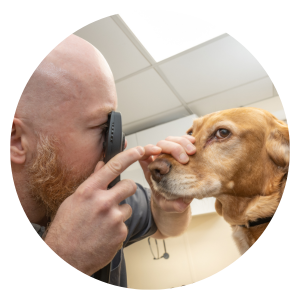Spotting the Signs & Staying Safe
As the temperatures drop in London, it’s natural to worry about your dog feeling the cold. Hypothermia in dogs doesn’t happen often here, but other winter dangers are more common. These include antifreeze poisoning and slipping when walking at night. Here’s a short guide to keeping your dog safe.
1. Hypothermia: What to Watch For
- Shivering or trembling — often the first sign.
- Cold ears and paws — these may feel very chilled to the touch.
- Lethargy or reluctance to move.
- Serious symptoms like slow breathing or heartbeat, loss of balance, or collapsing require immediate medical attention.
What to do if you suspect hypothermia
- Move your dog into a warm, dry space.
- Use blankets or wrapped warm (not hot) water bottles to warm them gradually. Avoid direct high heat and have 5cm of padding between water bottles and skin contact to avoid thermal burns.
- Call your local branch for advice or one of our 24-hour hospitals if the branch is closed or out-of-hours.
2. Antifreeze Poisoning: A Greater Winter Threat
Antifreeze (ethylene glycol) — and some screen-wash or de-icing fluids — can be extremely toxic to dogs. It often tastes sweet and looks like water, making it more likely to be licked from puddles or spilled containers. Even small amounts can be fatal.
Signs of Antifreeze Poisoning
- Vomiting
- Wobbly, “drunk” behaviour
- Excessive drinking and urination (initially)
- Lethargy
- Fast breathing
- Seizures or collapse
- Later: signs of kidney failure
What to Do If You Suspect Poisoning
- Move your dog away from the spill or puddle.
- Call your vet immediately, even before symptoms appear. Describe what happened, what the substance is (if known), where it is, and when exposure occurred.
- If safe, wash your dog’s fur and paws with mild soap and lukewarm water, then dry thoroughly.
- Don’t try home remedies (e.g., no self-induced vomiting or giving medication) — early veterinary care is critical.
Prevention Tips
- Store antifreeze, de-icer and screen-wash securely in sealed, clearly labelled containers.
- Clean up any spillages promptly.
- Avoid walking near parked vehicles, garages or drains, where leaks are more likely.
3. Walking After Dark or in Cold Weather: Keeping Safe on Winter Dog Walks
- Visibility matters: Use reflective gear for both you and your dog — collars, leads, coats — and consider clip-on LED lights.
- Consider winter coats for your dog and never leave them in the car for long periods during winter
- Choose safe routes: Stick to well-lit, quieter paths and avoid busy roads, especially in low-visibility conditions.
- Shorten walks when the weather is really harsh, or if your dog is very young, old or lightly coated.
- Check and clean paws after walks: Salt, grit or chemicals used for de-icing can irritate or be toxic if licked. Wipe or wash paws if needed.
- Stay on lead near roads or areas where chemical spill risk is higher.
In conclusion…
Hypothermia might not be the biggest winter danger for dogs in London. But antifreeze poisoning and risks from walking in the dark are serious. The good news is that these issues can mostly be avoided. Stay alert, take some common-sense precautions, and you’ll help keep your dog warm, safe, and happy all winter long.
Sources & Further Reading:
• Dogs Trust – Cold Weather Advice: dogstrust.org.uk
• PDSA – Antifreeze Poisoning in Dogs




